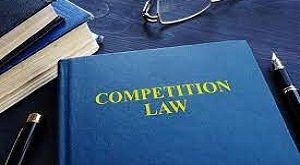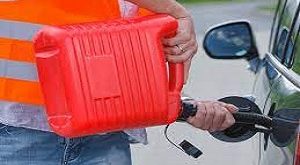Are you intrigued by the sewing machine industry? Whether you’re a fledgling or an accomplished sewer, possessing and utilizing a sewing machine can be staggeringly valuable. You can use this adaptable tool to make any kind of clothing, from one-of-a-kind creations to alterations. However, what is a sewing machine and how does it function? We’ll talk about the various types of machines available, their advantages and disadvantages, and how to use them effectively in this blog post. So grab your needles and thread and let’s get started!
The use of sewing machines For centuries, sewing machines have been an essential tool in the fashion and clothing industries. Initially developed to make sewing simpler and quicker, they have since advanced into complex yet easy to understand machines that can make mind boggling plans easily.
Thread is used to join two pieces of fabric together on a sewing machine. This procedure gives clothes structure and shape while also creating seams that prevent them from fraying apart. Also, numerous advanced sewing machines offer highlights, for example, weaving sewing, buttonholes, and in any event, stitching capacities.
One significant advantage of utilizing a sewing machine is its capacity to accelerate the creation interaction essentially. Via computerizing a significant part of the work engaged with hand-sewing, you can finish projects substantially more rapidly than if you were doing it by hand alone.
Another advantage is that it lets you make clothes or other things with more precision. You can guarantee consistent results each time by having access to precise measurements and stitch settings.
Having a high-quality sewing machine is essential for achieving your creative objectives in an efficient and effective manner, regardless of whether you are a novice crafter or an experienced professional tailor.
The various sorts of sewing machines
Sewing machines come in various sorts and models, each intended to take care of explicit sewing needs. The mechanical sewing machine, which uses a foot pedal to make stitches, is the most common type. It is inexpensive, simple, and simple to use.
Electronic models of sewing machines that run on electricity are another type. It has programmable stitch patterns, an automatic thread cutter, and a speed control that can be adjusted, among other features, that a mechanical machine lacks.
Computerized sewing machines are available for those who want even more advanced capabilities. They can be modified with custom join examples and plans through their underlying programming or USB associations.
Serger or overlock machines are specialized sewing machines that are used to professionally finish seams. They can simultaneously create an edge seam and trim excess fabric.
Weaving machines are additionally famous for adding ornamental plans onto textures utilizing strings of different tones. When making quilts, sewing multiple layers of fabric together is made simpler by quilting machines.
Depending on your level of skill and intended use, you have a lot of options when it comes to selecting a sewing machine.
The advantages and disadvantages of using a sewing machine Sewing machines have long been a common household tool because they are quick and easy to use. However, just like with any other piece of equipment or tool, using a sewing machine has advantages and disadvantages.
One of the fundamental benefits of utilizing a sewing machine is its speed. Multiple layers of fabric can be stitched together quickly and easily with a sewing machine. Users are able to complete their projects more quickly than if they were hand-sewing because this saves time.
Accuracy is an additional advantage. Sewing machines ensure that seams are straight and evenly spaced, resulting in garments and crafts with professional-looking finishes thanks to their precise stitching capabilities.
However, the cost of a sewing machine is one drawback. Depending on the brand and features, sewing machines can cost a lot. Additionally, over time, costs associated with maintenance, such as oiling or needle replacement, can add up.
The learning curve involved in operating a sewing machine is another potential drawback. Getting good at feeding fabric through the machine with the right tension and straight lines requires practice.
In spite of these disadvantages, many individuals actually find that the advantages offset the cons with regards to utilizing a sewing machine for their undertakings.
Instructions to utilize a sewing machine
Utilizing a sewing machine might appear to be threatening from the get go, however with training and persistence, it can turn into a tomfoolery and compensating side interest. Utilizing a basic sewing machine is as follows:
First, place the machine and your work area on a sturdy surface. Ensure you have every one of the important supplies, for example, string, texture scissors and needles.
Select your fabric and the appropriate needle size next. String the bobbin and burden it into the machine as indicated by your producer’s guidelines.
When everything is set up, turn on the sewing machine and start by working on sewing on piece texture until you feel sufficiently great to begin your real task.
At the point when prepared to sew, line up your texture under the presser foot of the machine. While gently pressing down on the foot pedal for speed control, use both hands to guide your material through the machine.
Continue guiding the material smoothly through as you sew along your desired seam or pattern line without pulling too hard or allowing it to bunch up underneath as you sew.
Eventually, using a sewing machine will become second nature to all who try it, bringing joy to those who practice using various fabrics like cotton or wool.
What are the advantages of utilizing a sewing machine?
Sewing with a machine has numerous advantages for both novices and seasoned sewers. First, it saves time and effort because the machine can complete tasks that would take hours to complete manually in minutes. As a result, it is an excellent tool for people with limited time or multiple projects to complete.
Sewing machines likewise permit clients to make mind boggling plans with accuracy and precision, giving them more command over the end result. Users can experiment with a variety of patterns, textures, and finishes based on their preferences thanks to the various stitch options offered by the majority of machines.
In addition, using a sewing machine makes repetitive tasks like hemming or attaching buttons much simpler, which increases productivity. Additionally, it can be used with a variety of fabrics, including silk, leather, and denim.
Sewing can be therapeutic and enjoyable in addition to these practical advantages. It gives users a chance to show off their creativity and learn new skills at the same time.
Putting resources into a quality sewing machine is a superb choice because of its many benefits which range from saving time and work to permitting you more prominent artistic liberty.
Sewing machines are useful and effective tools for making clothes, accessories, and home decor, but they may not always be the best choice. Fortunately, you don’t have to use a sewing machine to get the same results. There are other options.
The most obvious alternative to sewing with a machine is probably hand-sewing. Hand-stitching allows for greater control and precision over each stitch, despite the fact that it may take longer than machine stitching. When working with small objects or delicate fabrics, this method comes in especially handy.
Stick firearms can likewise be utilized as an option in contrast to sewing machines in specific circumstances. They can even be used to make decorative embellishments like appliques and are effective on heavier fabrics like canvas or denim.
Fabric tape is an additional option for those who want to avoid both hand-sewing and glue-gunning. Fabric tape can be used to attach patches and hem pants because it comes in a variety of widths and strengths.
In certain examples, no sewing at all may be vital thanks to no-sew glue items. Pre-cut strips or liquid versions of these adhesives can be purchased to bond fabric together without the need for stitching.
When working with projects that are based on fabric, these alternatives offer flexibility and creativity in addition to the convenience of having access to a sewing machine.
How does the sewing machine work?
Using a needle and thread, sewing machines stitch fabric together. The machine has an engine that abilities the needle, which goes all over quickly through the texture. On either side of the fabric, this motion creates thread loops that are then interlocked with another thread underneath to form a secure seam.
The speed at which the needle moves can be changed relying upon the sort of texture being utilized, taking into consideration more prominent accuracy and command over your sewing. Automatic threading and buttonhole attachments are two examples of features that can be found on a variety of sewing machines.
Understanding how to thread a sewing machine correctly and adjusting tension settings to meet the needs of your project are essential for effective use. When it comes to operating a sewing machine, practice makes perfect, so don’t give up if you have trouble at first.
Anyone who wants to pursue sewing as a hobby or a career needs to know how a sewing machine works. It makes it simple to produce high-quality clothing and accessories while letting you use every feature to its full potential.
Share







